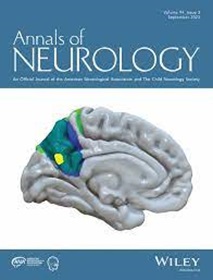RNA Binding Protein Dysfunction Links Smoldering/Slowly Expanding Lesions to Neurodegeneration in Multiple Sclerosis
Abstract
Objective
Despite the advances in treatments for multiple sclerosis (MS), unremitting neurodegeneration continues to drive disability and disease progression. Smoldering/slowly expanding lesions (SELs) and dysfunction of the RNA binding protein (RBP) heterogeneous nuclear ribonucleoprotein A1 (hnRNP A1) are pathologic hallmarks of MS cortex and intricately tied to disability and neurodegeneration, respectively. We hypothesized that neuronal hnRNP A1 dysfunction contributes to neurodegeneration and is exacerbated by smoldering/SELs in progressive MS.
Methods
Neuronal hnRNP A1 pathology (nucleocytoplasmic mislocalization of hnRNP A1) was examined in healthy control and MS brains using immunohistochemistry. MS cases were stratified by severity of hnRNP A1 pathology to examine the link between RBP dysfunction, demyelination, and neurodegeneration.
Results
We found that smoldering/SELs were only present within a subset of MS tissues characterized by elevated neuronal hnRNP A1 pathology (MS-A1high) in adjacent cortical gray matter. In contrast to healthy controls and MS with low hnRNP A1 pathology (MS-A1low), MS-A1high showed elevated markers of neurodegeneration, including neuronal loss and injury, brain atrophy, axonal loss, and axon degeneration. Additionally, we discovered a subpopulation of morphologically intact neurons lacking expression of NeuN, a neuron-specific RBP, in cortical projection neurons in MS-A1high cases.
Interpretation
hnRNP A1 dysfunction contributes to neurodegeneration and may be exacerbated by smoldering/SELs in progressive MS. The discovery of NeuN-negative neurons suggests that some cortical neurons may only be injured and not lost. By characterizing RBP pathology in MS cortex, this study has important implications for understanding the pathogenic mechanisms driving neurodegeneration, the substrate of disability and disease progression. ANN NEUROL 2025;97:313–328

 求助内容:
求助内容: 应助结果提醒方式:
应助结果提醒方式:


